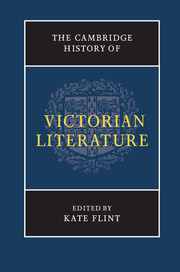Book contents
- Frontmatter
- Introduction
- PART I AUTHORS, READERS, AND PUBLISHERS
- 1 Publishing and the materiality of the book
- 2 Victorian reading
- 3 Periodicals and reviewing
- PART II WRITING VICTORIA’s ENGLAND
- PART III MODES OF WRITING
- PART IV MATTERS OF DEBATE
- PART V SPACES OF WRITING
- PART VI VICTORIAN AFTERLIVES
- Select bibliography
- Index
1 - Publishing and the materiality of the book
from PART I - AUTHORS, READERS, AND PUBLISHERS
Published online by Cambridge University Press: 28 March 2012
- Frontmatter
- Introduction
- PART I AUTHORS, READERS, AND PUBLISHERS
- 1 Publishing and the materiality of the book
- 2 Victorian reading
- 3 Periodicals and reviewing
- PART II WRITING VICTORIA’s ENGLAND
- PART III MODES OF WRITING
- PART IV MATTERS OF DEBATE
- PART V SPACES OF WRITING
- PART VI VICTORIAN AFTERLIVES
- Select bibliography
- Index
Summary
On 29 November 1814, a printing revolution shook the world of British printing and publishing. After months of secret work, the owners of The Times of London used imported Koenig presses, steam-powered, flat-bed cylinder machines to issue overnight that morning’s edition. Churning out material at 1,000 impressions an hour, they produced an entire run of 4,000 copies and delivered them to readers at an unrivalled speed. The Times editorial announced its triumphant entry into the industrial age with typical hyperbole. ‘Our journal of this day’, it intoned, ‘presents to the public the practical result of the greatest improvement connected with printing since the discovery of the art itself.’ Further refinements by Augustus Applegarth and Edward Cowper in the 1820s led to wholesale adoption of more efficient presses by the industry, so that by the late 1830s its use was ubiquitous throughout Britain. The steam press, which replaced the hand-operated, metal Stanhope press, joined innovations such as the Fourdrinier papermaking machine in mechanizing the process and lowering the cost by which texts reached the market, so powering print to its key place in Victorian cultural life, and thus conjoining steam in the public mind with print activity. As James Secord notes, ‘The steam-powered printing machine, machine-made paper, public libraries, cheap woodcuts, stereotyping, religious tracts, secular education, the postal system, telegraphy, and railway distribution played key parts in opening the floodgates to an increased reading public.
- Type
- Chapter
- Information
- The Cambridge History of Victorian Literature , pp. 13 - 33Publisher: Cambridge University PressPrint publication year: 2012
- 1
- Cited by



